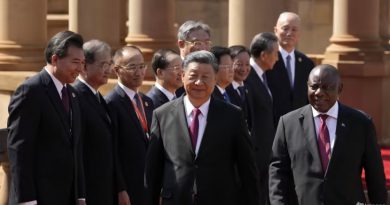Ashoura Day: Iran warns Story Tellers not to express grief over the Mullah policies
The regime employs Ashoura as a means of attracting and expanding public support by appealing to Shiites’ past grievances.
Ashoura Day celebrations have historically been an occasion for Shiite Muslims to remember their grievances, weep over lost rights, and remind future generations of their epic plight. The occasion has always been an opportunity for Shiites to condemn what they see as ‘injustice’ at the hands of their adversaries. The Iranian government has issued stern warnings to meddahs (public storytellers who appear in Shiite religious rituals) not to raise people’s grievances during the Ashoura celebrations, directly contradicting the purpose for which such celebrations were created.
Ashoura Day, which commemorates Imam Hossein’s (PBUH) martyrdom at the hands of Yazid ibn Mu’awiya, an Umayyad dynasty caliph, after a bitter power struggle between the two, is a centuries-old tradition. Ashoura Day is not viewed in the same way by everyone. For the Shiite masses, Ashoura Day is a religious event in which they remember past grievances and exalted imams. However, for the rulers, it is a political event designed to boost legitimacy and consolidate power.
It is said that Mukhtar al-Thaqafi, one of Shiism’s early champions who Shiites revere for his alleged role in exacting vengeance on the killers of Imam Hossein, was the first to order Ashoura celebrations. He directed that a consolation gathering be organized for Imam Hossein at his home in Kufa. He sent female street weepers to mourn Imam Hossein’s death in order to incite Muslim rage against the Umayyad dynasty rulers, whom Shiites regard as tyrants who usurped power for their own gain. Al-Thaqafi’s motivations appear to have been primarily political. He used religious rituals to achieve a political end: to rebel against Sunni Umayyad rulers.
The Ashoura rituals were practiced on a small scale in Iran until the arrival of the Safavids, a Shia dynasty that ruled Iran in the 16th century. The first ruler of the dynasty made the most significant change in Iranian history by forcibly converting Iranians from Sunni to Shiite Islam. According to historical accounts, hundreds of thousands of Sunnis were slaughtered in this ideological campaign, which forever altered Iran’s doctrine, religious, political, and ideological orientations. During the Ashoura Day rituals at the Safavid royal court, mourners had always come to pay condolences to the shahs.
Before the Safavids, Buyids—Fatimid dynasty rulers, who acted nominally as guardians of the Abbasid caliphate—played a major role in expanding the Ashoura Day celebrations. But under the Safavids in particular, the Ashoura Day celebrations and rituals had become part of the Shiite identity. Overall, Ashoura Day had been a religious event and ritual that Shiite rulers had exploited to achieve political ends and consolidate their ideological beliefs throughout Shiite society.
On that day, Imam Hossein, grandson of the Prophet (PBUH), was killed along with other 72 members of his household in 61 AH. The killing was tragic. It was an unspeakable incident condemned by both Sunnis and Shiites. Sunni scholars always invoke curse upon the killers of Imam Hossein since he is highly regarded in the Sunni traditions and texts.
In recent years, the Iranian regime has been eager to commemorate the occasion. The regime employs Ashoura as a means of attracting and expanding public support by appealing to Shiites’ past grievances. It has served as a means of gaining and expanding legitimacy among religious segments of the population.
However, things appear to have changed recently. The country is experiencing deplorable political, economic, and social conditions. Poverty, inflation, unemployment, and polarization are all at an all-time high. The regime has tight control over the country, killing and imprisoning anyone who speaks out against these grievances.
“In the meeting we had (with state officials), meddahs were directed not to refer to or raise any issue that could incite the people’s wrath,” said Jafar Akbarzadeh, a meddah in the eastern Iranian shrine city of Mashhad. “Referring to such grievances without having answers to the people’s questions (about the country’s worsening conditions) fuels resentment.”
Nonetheless, some meddahs have spoken out against former Iranian governments, holding them responsible for the country’s deteriorating political and economic situation. They went on to criticize the country’s foreign policy and nuclear talks. Hassan Rouhani’s government and former Foreign Minister Mohammad Javad Zarif have come under fire from meddahs at all levels.
Over the past few years, the Iranian regime has faced several massive popular protests over deteriorating living conditions, repression, and international isolation. Protests erupted in nearly every Iranian city and town, with slogans aimed at the country’s supreme leader, Ali Khamenei, who holds authority over the country’s major affairs in politics, religion and economy.
Surprisingly, the majority of the meddahs are loyal to the Iranian regime and its supreme leader. However, the regime’s deep fear of renewed protests prompted it to take precautionary measures, such as issuing such an ultimatum. The regime does not want such complaints about worsening conditions during Ashoura rituals to sway pro-government religious segments. This could cause them to change their allegiances and join the protests, or at the very least sympathize with them.
The country’s economy is in shambles. In some Iranian provinces, inflation has reached 90 per cent. It even reached 100 per cent on food items. Iranians’ purchasing power has decreased, as has their consumption of basic food items. People become enraged as a result of this bleak picture. And Ashoura rituals were said to be for this purpose: expressing grief and invoking grievances.
Once again, Iran’s rulers are compelled to use a religious ceremony to achieve a political goal. Previously, the regime would sponsor and expand the celebrations. Now, it appears that the regime’s interests lie in taking precautions against the celebrations, which usually involve millions of mourners. The regime does not want such a large population to turn against it, speaking out against current grievances caused by the regime’s ideology-centered foreign policy and extraterritorial misadventures.
It is striking that the Iranian government recently warned meddahs not to speak out about the country’s deteriorating conditions. It reveals the Iranian regime’s duality when it comes to religious ceremonies, demonstrating that such events are only used to incite sentiments that serve its own agenda and rally supporters of its version of governance behind it.
The Iranian regime will allow people to air their grievances in order to further its political and ideological agenda. However, it will not allow them to speak out about current grievances that it has created and is refusing to address. Clerics in Iran may allow the use of religious rituals against domestic or foreign adversaries. But if they feel it could jeopardize their rule, they will never allow it to be used against them.
Mostapha Hassan Abdelwahab is the former editorial manager of the English edition of the Baghdad Post. He is focusing on Iraqi and Iranian affairs, with articles posted on the Herald Report, Vocal Europe and other platforms.



